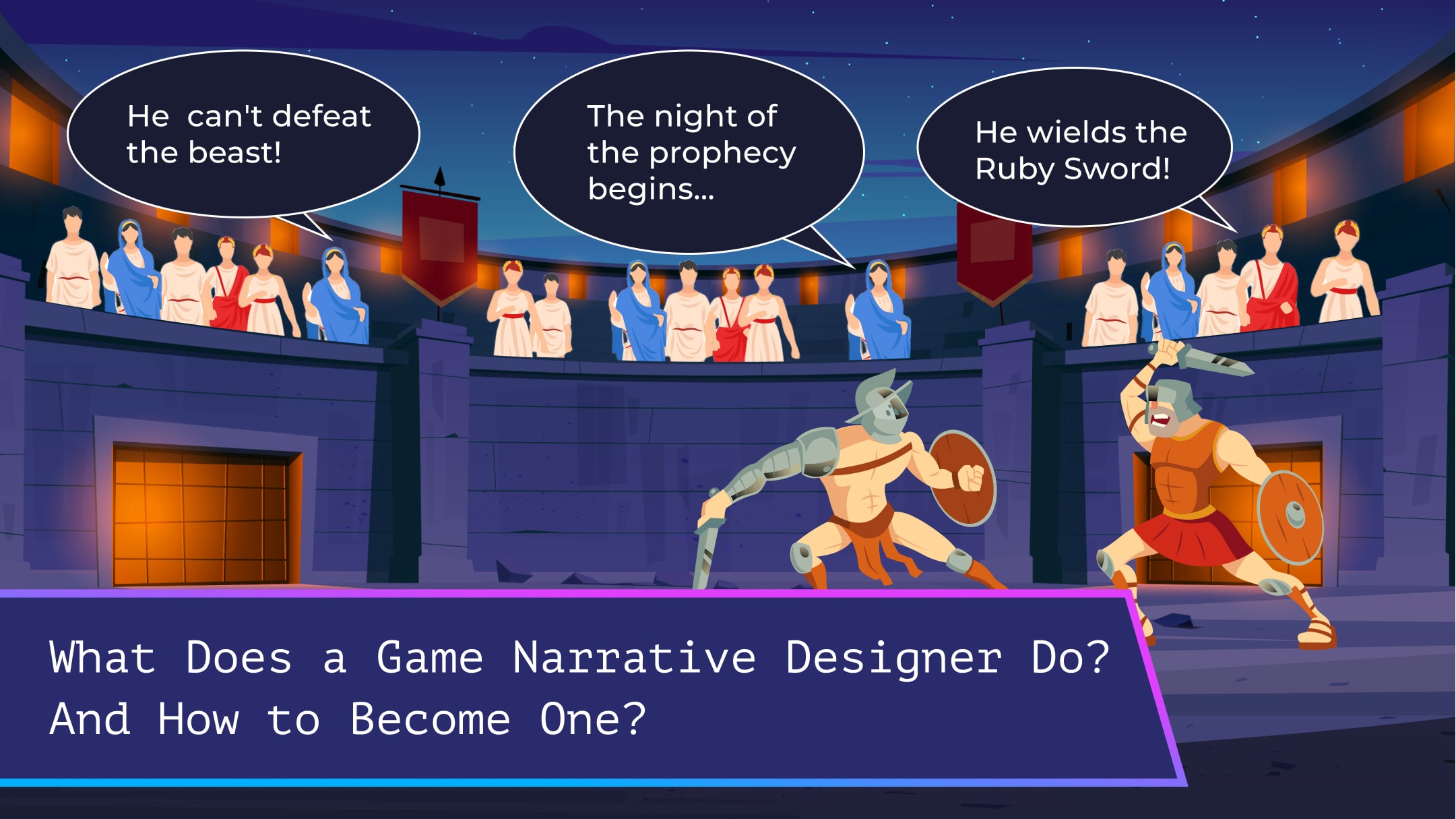
Short answer: A narrative designer shapes how story, characters, and player choice integrate into gameplay—making narrative an active part of the experience, not just background text.
Who is NOT a Narrative Designer?
- A person who only designs mechanics and systems (that’s a Game Designer) is not a Narrative Designer.
- A person who only writes a script like for film/TV is not a Narrative Designer.
- A person who only directs the creative vision (that’s a Game/Creative Director) is not a Narrative Designer.
- A person who only builds environments or art (that’s an Artist/Environment Designer) is not a Narrative Designer.
What does a Narrative Designer do?
- Story integration: embed story beats inside gameplay loops, not just cutscenes.
- Character creation: define backstories, motivations, arcs.
- Dialogue systems: branching dialogue, choice-consequence writing, tone consistency.
- World-building: lore, cultures, environmental storytelling, item descriptions.
- Narrative tools: script implementation with in-engine systems, branching editors.
- Collaboration: align with level designers, game designers, and artists to ensure narrative supports mechanics and spaces.
Why it matters
A strong narrative designer ensures the player doesn’t just “read” or “watch” the story—they play the story. Without this role, narrative risks feeling disconnected from the actual gameplay.
Common misconceptions
- “Narrative designers are just writers.” → They must design how story and mechanics interlock.
- “Cutscenes are the main job.” → Environmental storytelling, quest logs, item text, barks, and UI also carry story.
- “They work alone.” → Narrative design needs tight collaboration with design, art, and audio.
Core skills & tools
- Writing & editing (dialogue, branching stories, character arcs).
- Systems thinking: understanding how player agency changes narrative.
- Tools: Twine, Ink, Celtx, in-engine narrative editors (Unreal/Unity plugins).
- Knowledge: dramatic structure, pacing, choice theory, player psychology.
- Communication: sync story vision with non-writers.
Practical frameworks
- Three layers of narrative:
- Embedded (pre-written: cutscenes, lore, backstory).
- Emergent (player-driven outcomes, sandbox moments).
- Environmental (story told through spaces, props, sound).
- Choice clarity: meaningful player choices must be clear, consistent, and consequential.
- Ludo-narrative harmony: ensure mechanics and story reinforce each other (not conflict).
Portfolio tips
Show branching dialogue maps, short prototypes (Twine, Ink), lore documents, and before/after examples of narrative integration into gameplay. Short scripts alone aren’t enough—show design of story in play.
Quick example
Think Disco Elysium: narrative is everywhere—stats affect inner monologue, dialogue choices reshape story, and world-building is woven into every encounter.
Or The Last of Us: narrative moments embedded into gameplay beats (AI companions, environmental storytelling).
Author: Pouria Mojdeh
References:
- Evan Skolnick – Video Game Storytelling: What Every Developer Needs to Know about Narrative Techniques (Ten Speed Press, 2014)
- Tynan Sylvester – Designing Games: A Guide to Engineering Experiences (O’Reilly, 2013)
- Chris Crawford – Chris Crawford on Interactive Storytelling (New Riders, 2012)
- Ernest Adams – Fundamentals of Game Design (Pearson, 2014)
- Game Developer (formerly Gamasutra) – www.gamedeveloper.com
